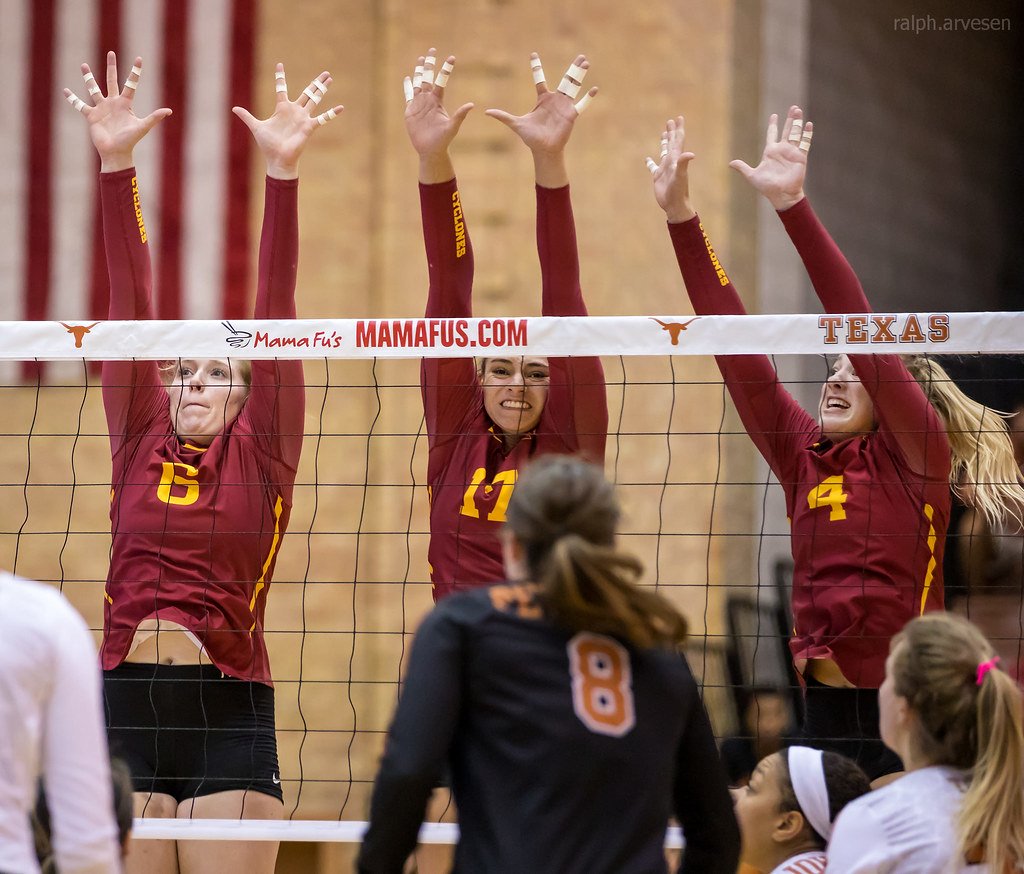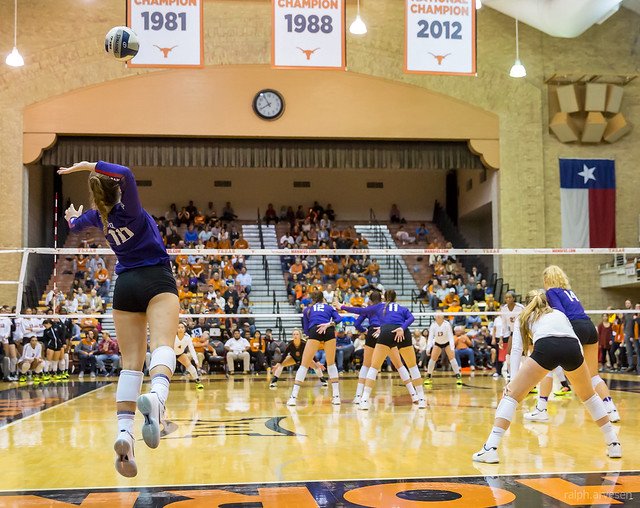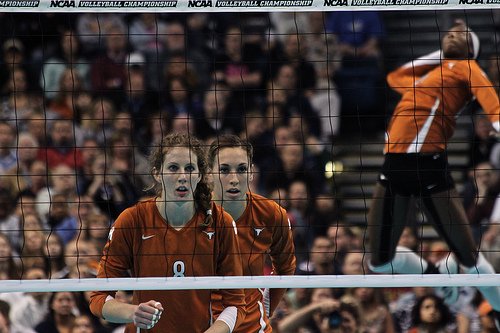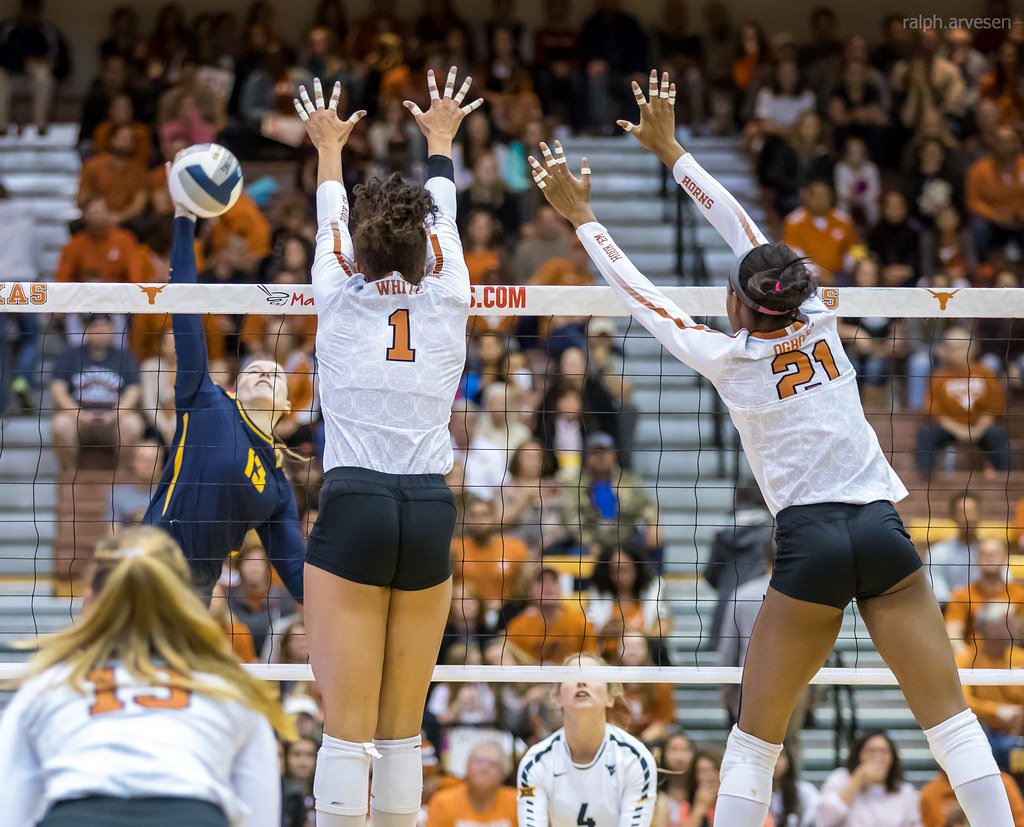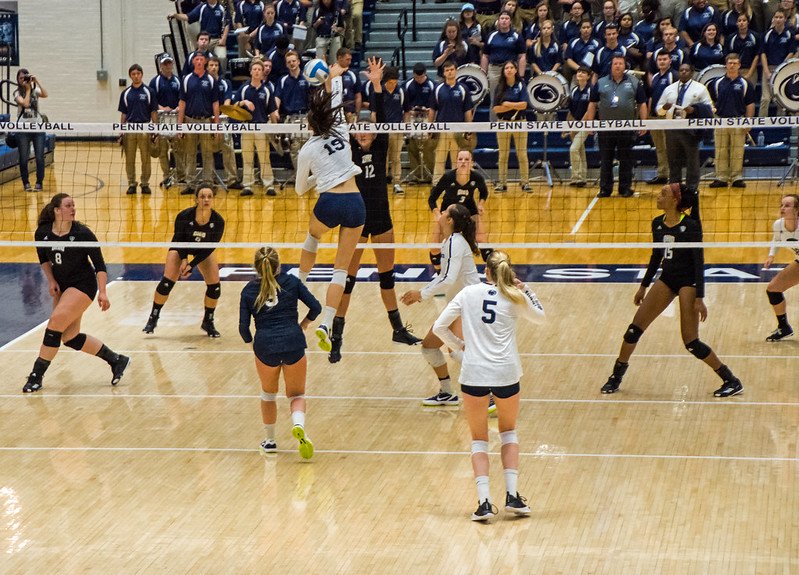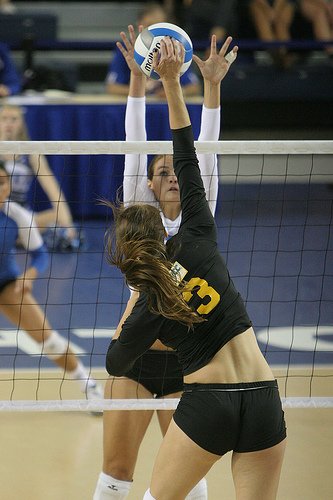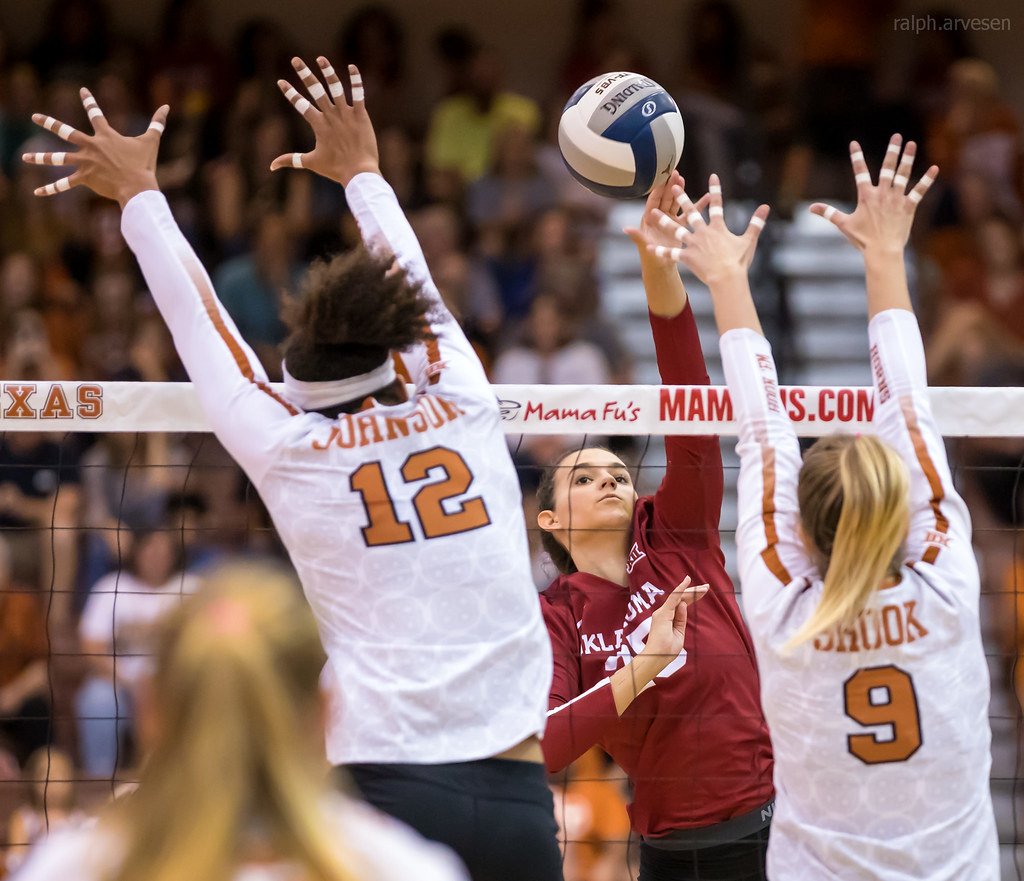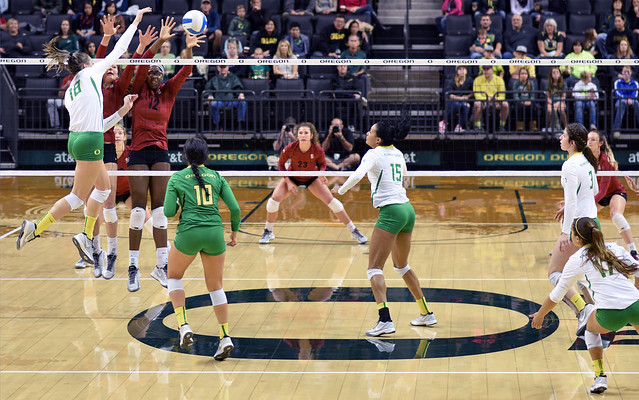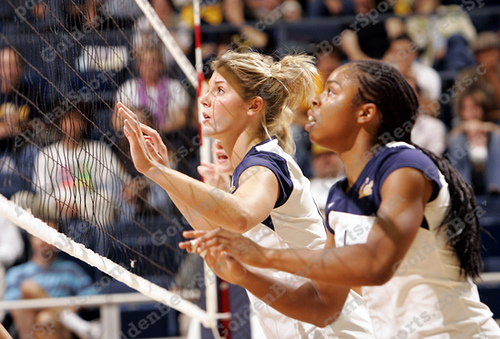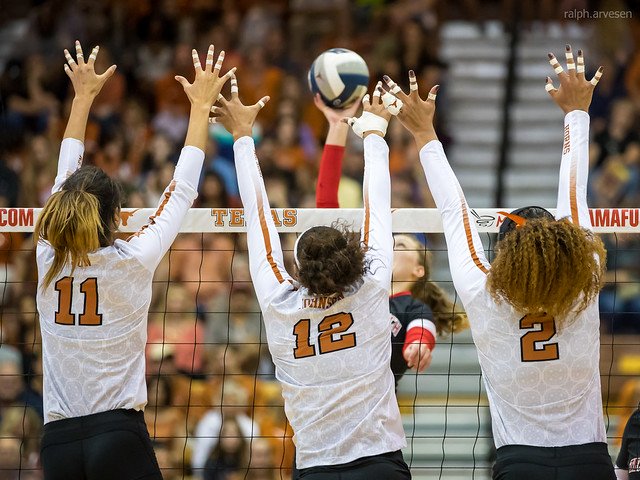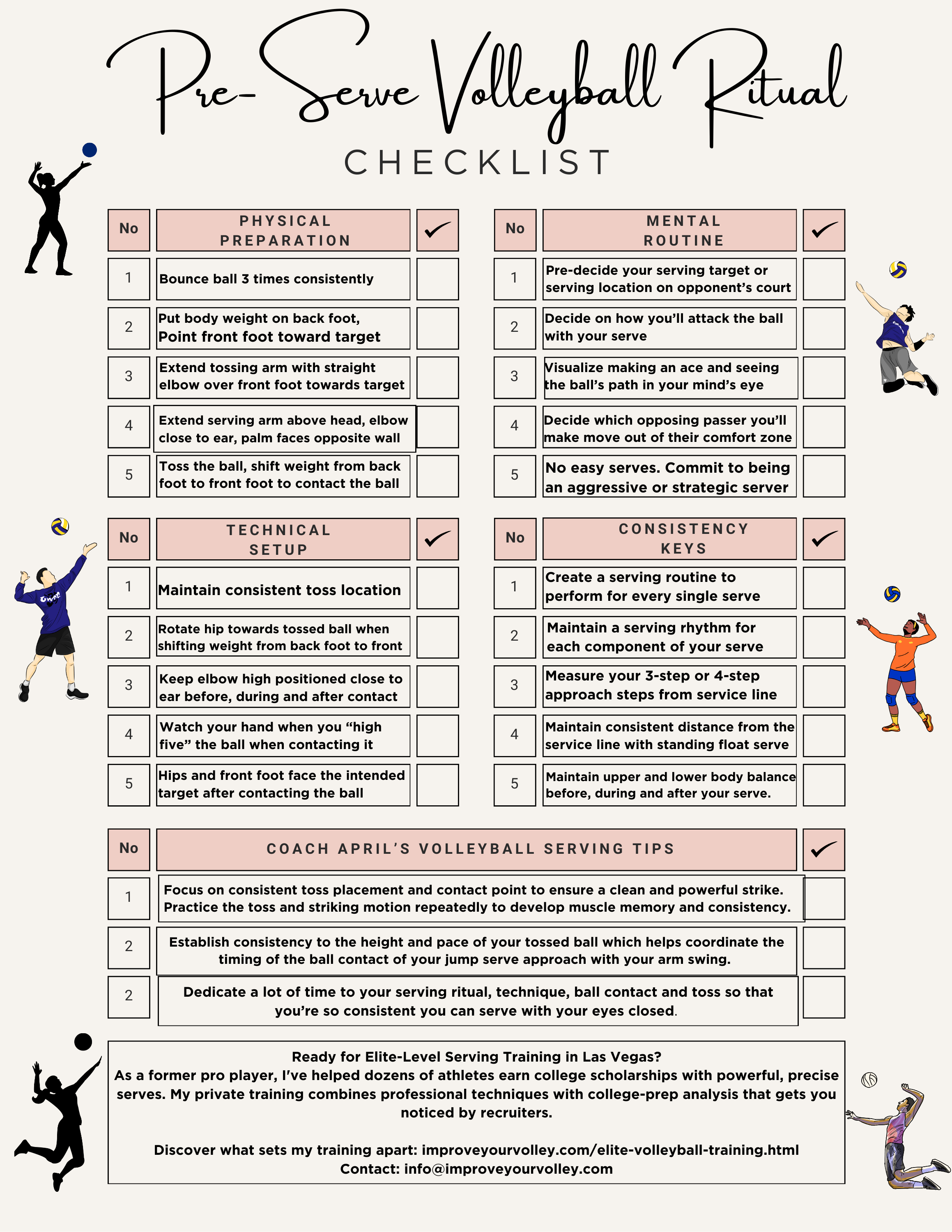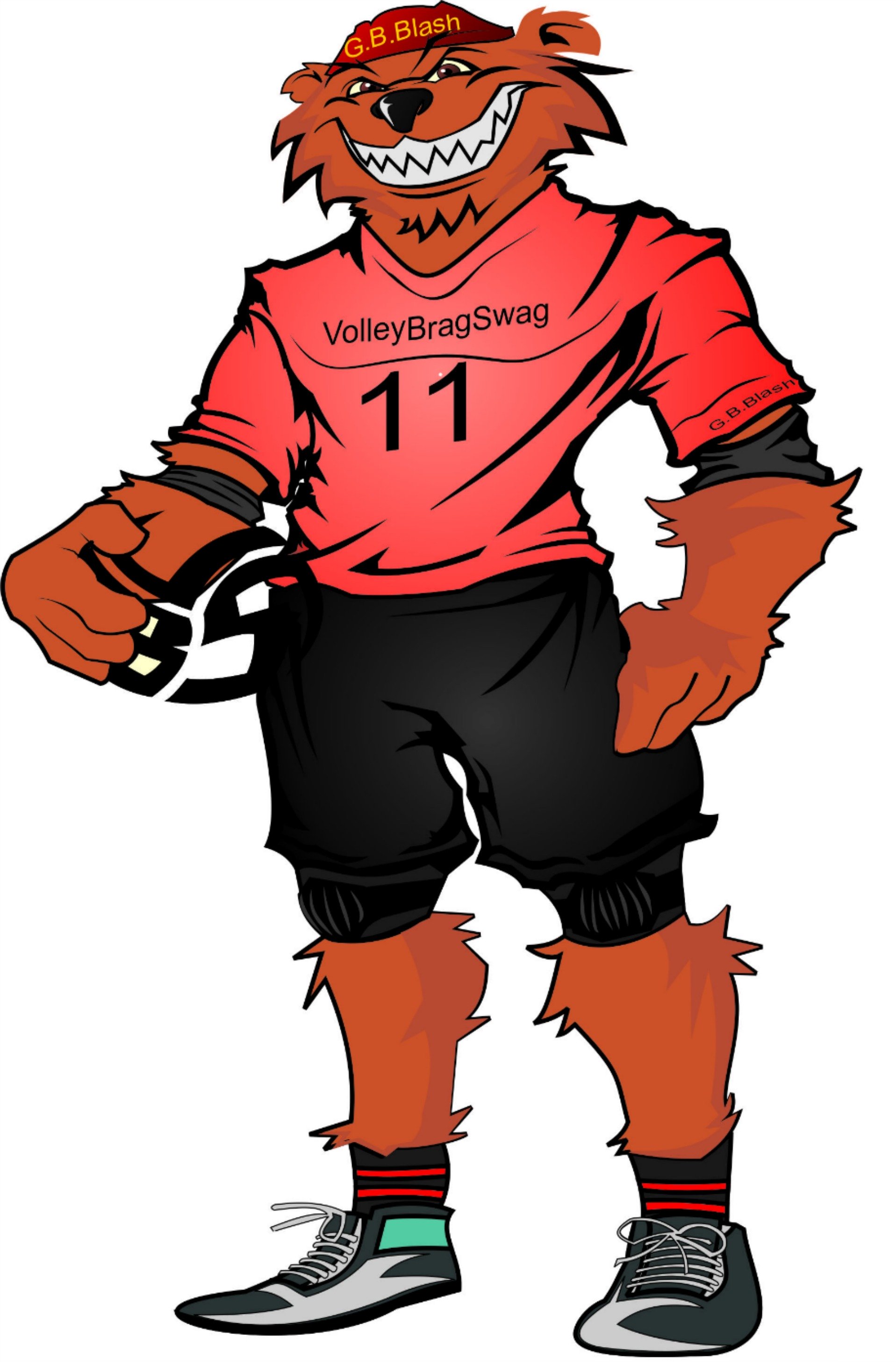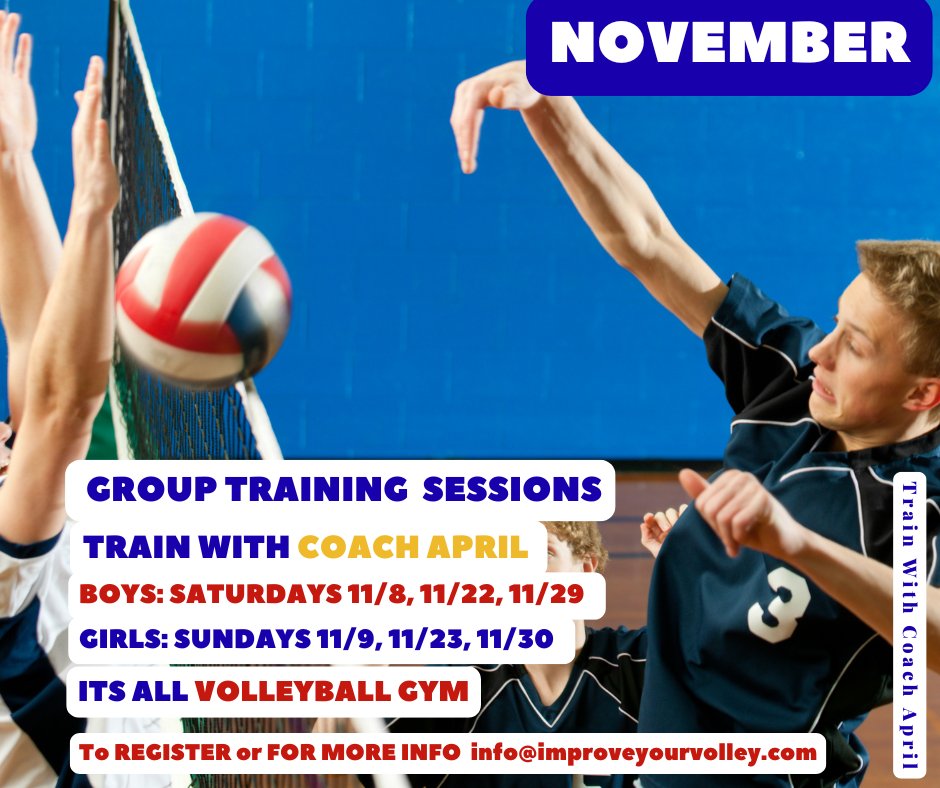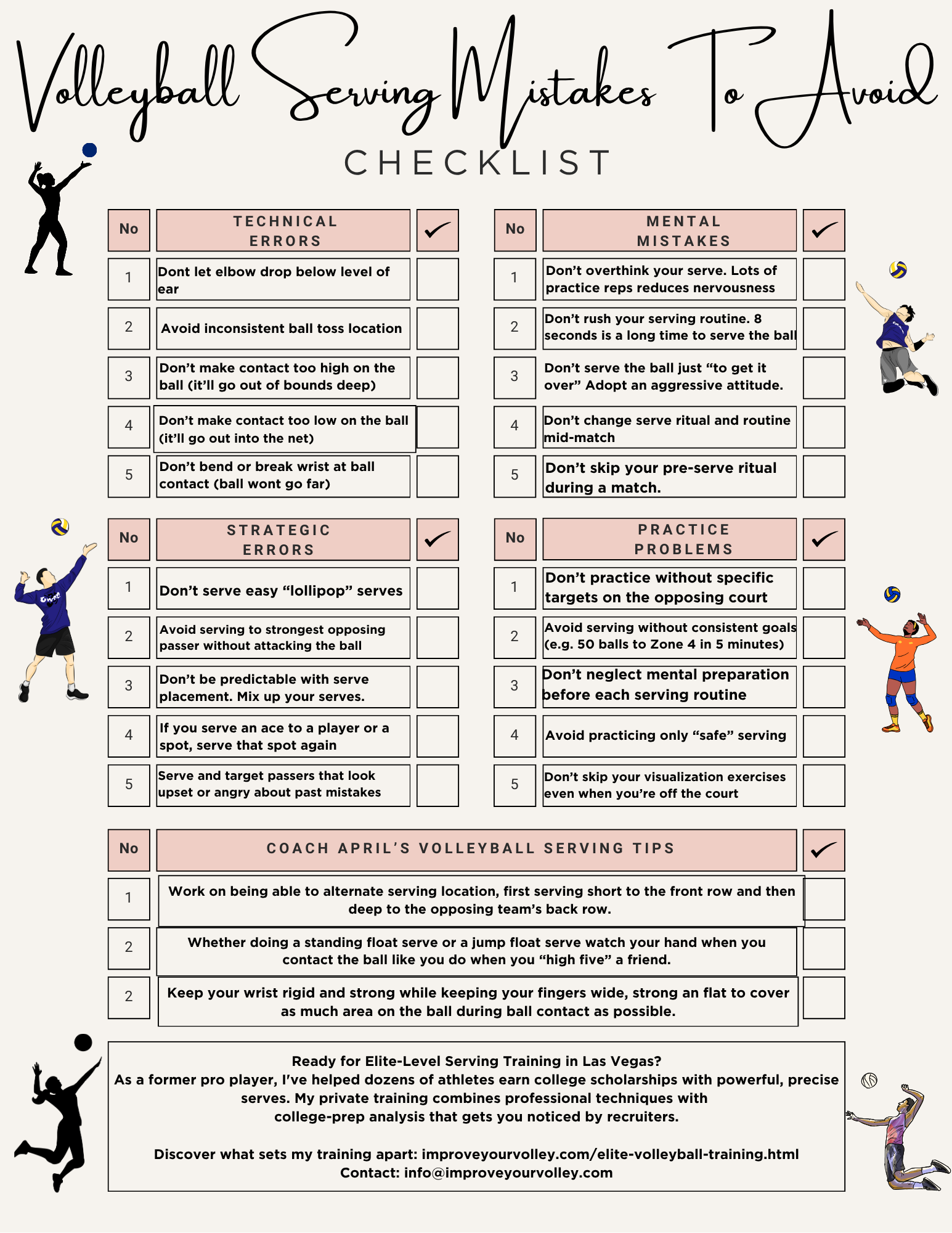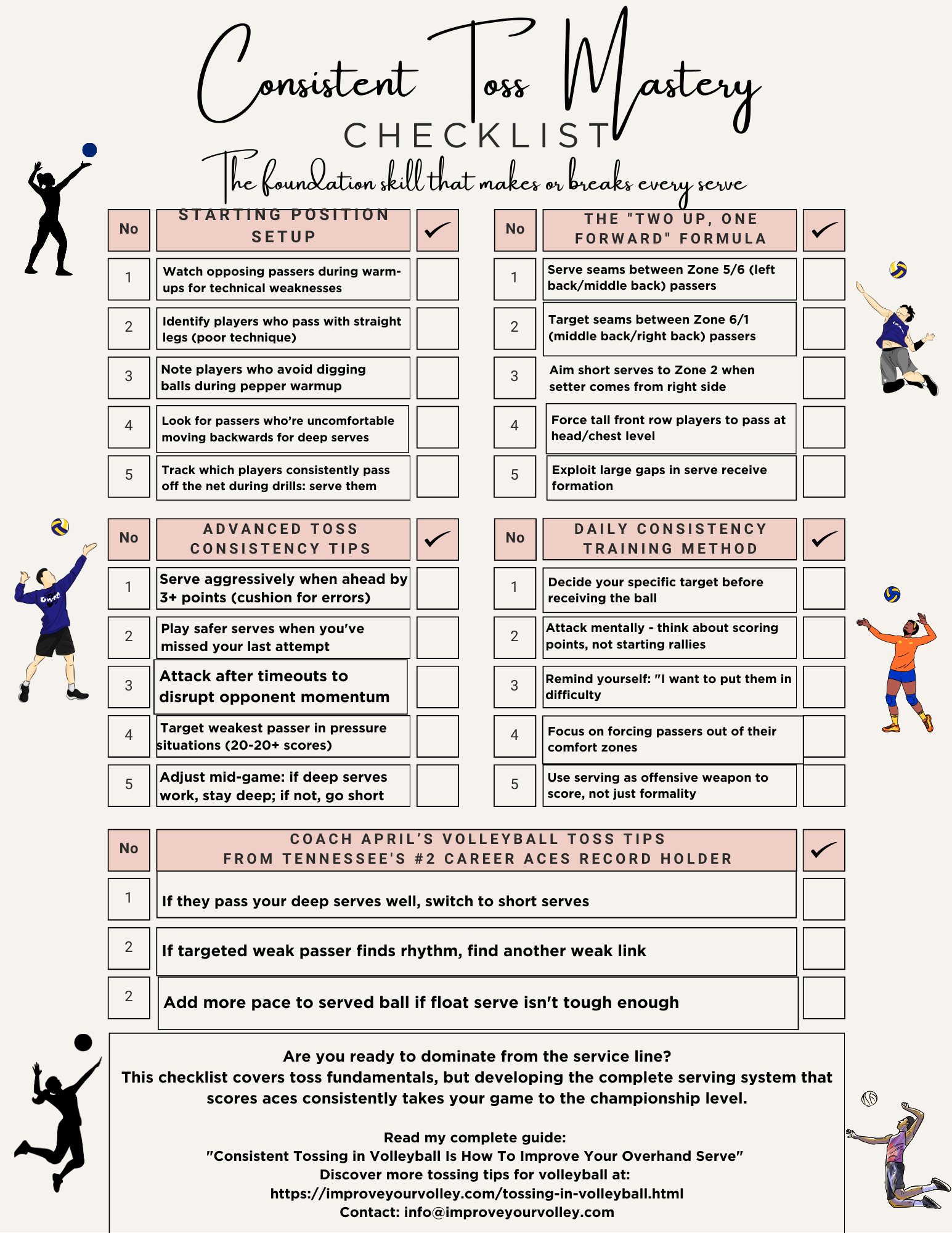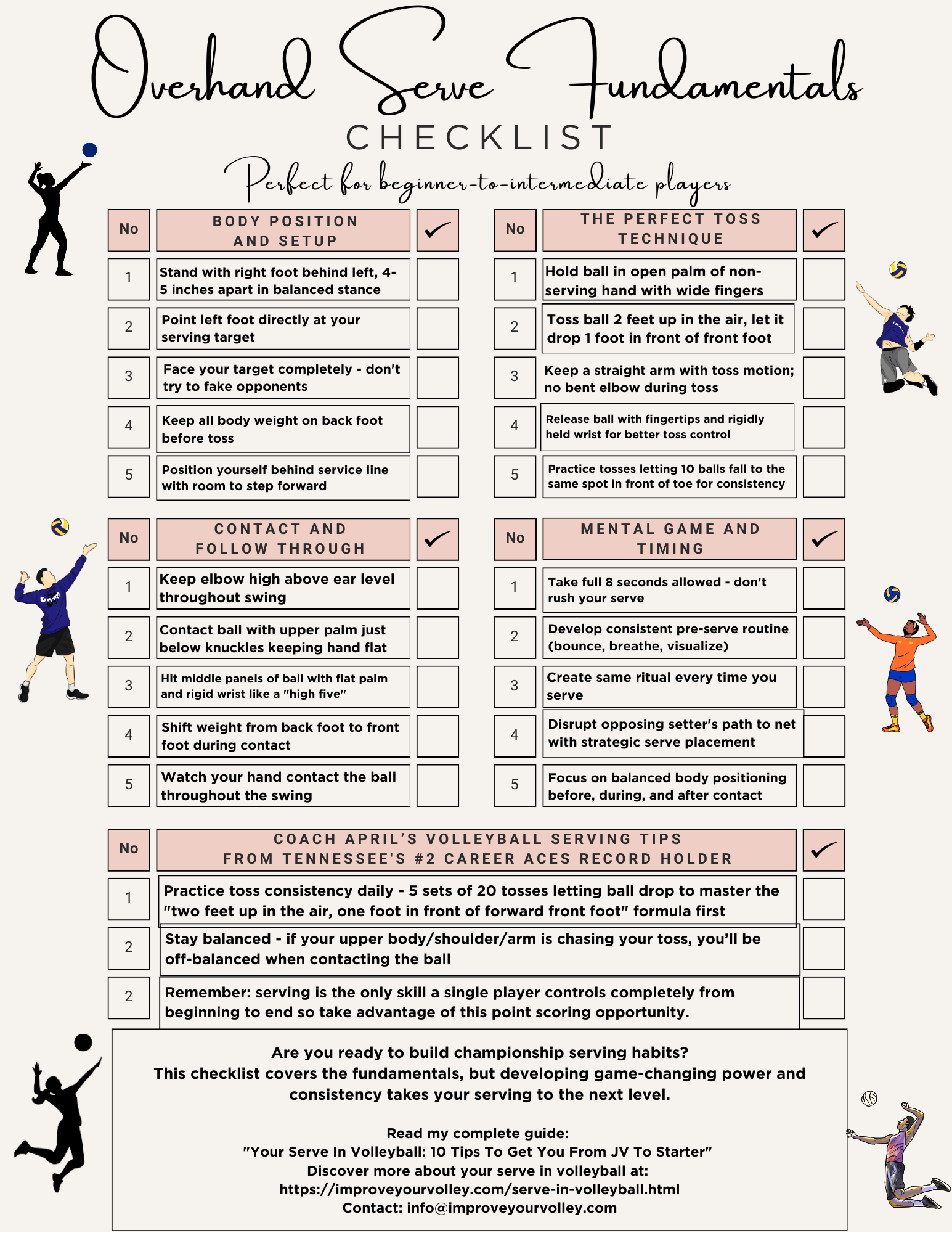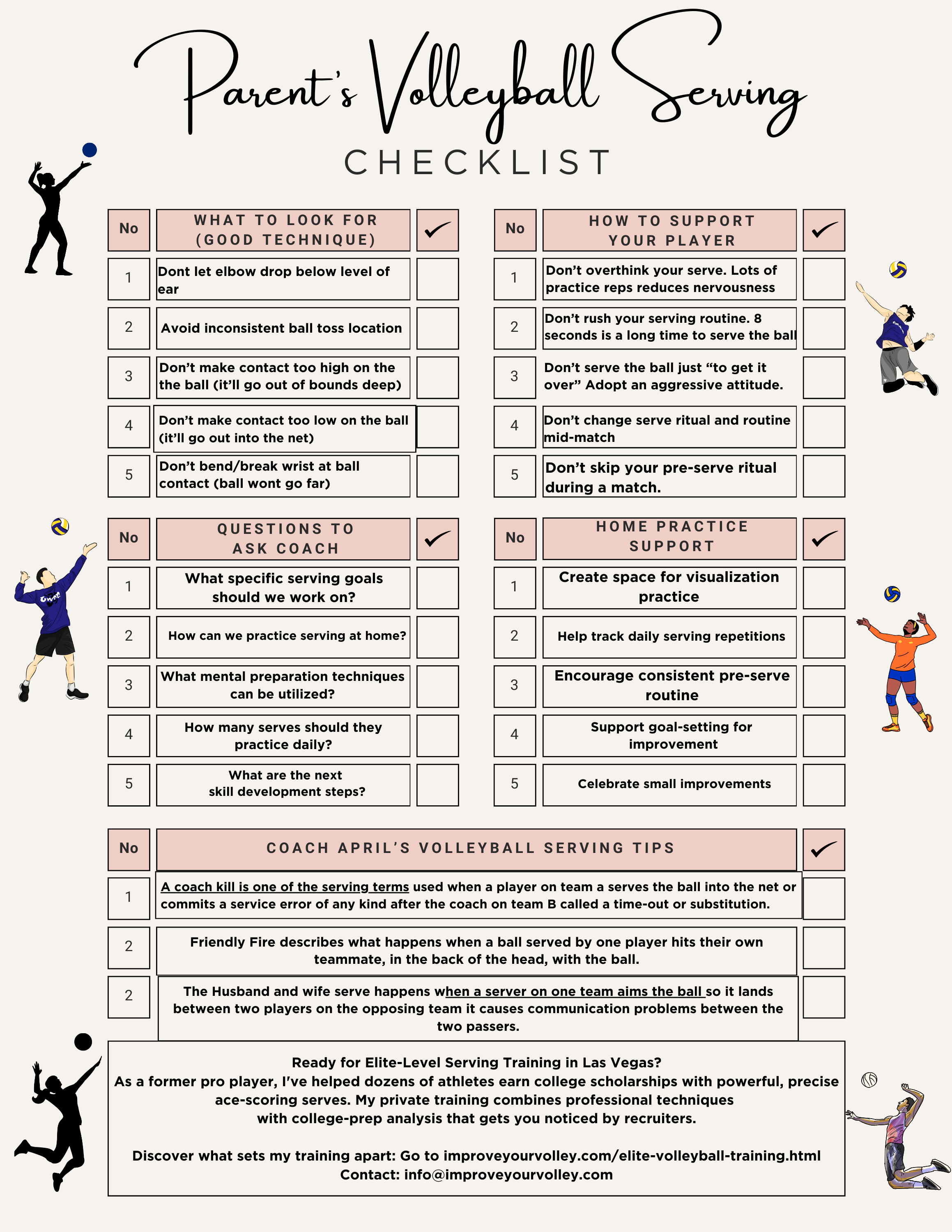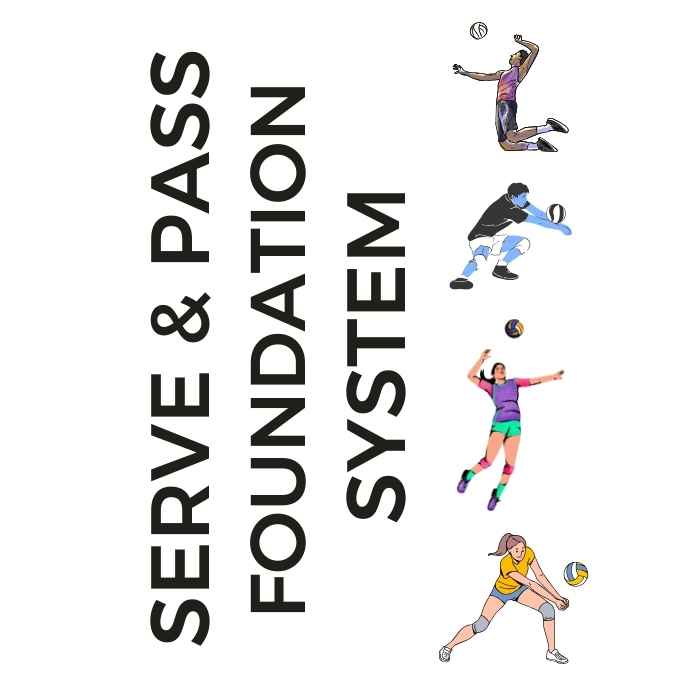
Serve + Pass Foundation System: The Complete Skills Arsenal The two-skill mastery system that transforms inconsistent players into the athletes coaches build their lineups around. Stop Struggling With The Two Most Important Skills In Volleyball!
- Improve Your Volleyball with Coach April
- Basic Volleyball Terminology.
- Four Types of Volleyball Blocks Varsity Volleyball Players Should Know
Four Types of Volleyball Blocks Varsity Volleyball Players Should Know
These blocking terms describe the four types of volleyball blocks varsity players know to do: one-on-one blocking, double block, triple block and swing blocking.
Improve your blocking hands positioning with the volleyball blocker pads I use in my private sessions
Blocking in volleyball is the first opportunity the players on the serving team have to stop the opposing team from attacking, spiking, bumping or tipping the ball successfully into your court.
Okay, so why Is the block in volleyball important?
Here's why!
Once your team serves the ball over the net, you guys are now "on defense" while the other team is "on offense."
Now that you're one of the six players on the defensive team the purpose of blocking in volleyball is to stop the other team's spikers from hitting the ball over the net into your court.
If your three front row hitters, who are now called "blockers" in volleyball since your team is on defense, can't stop the opposing team's hitters then it's up to your three back row players to dig the hard hit or the tip up so that your team can replay it and send it back over the net in an attempt to earn a point and to win the right to serve the ball.
Four Types of Volleyball Blocks Varsity Volleyball Players Should Know
Blocking Terms
The volleyball block terms below provide an explanation for the more advanced skills and technique used by players to position themselves in the front court in order to perform a successful block.
Some of these blocking terms deal with how players can take away a significant amount of area along the net with their hands without blocking the hitter, so that they force the hitter to direct their spike right to their teammates waiting to dig the hard hit in defense behind them.
Four Types of Volleyball Blocks Varsity Volleyball Players Should Know:
What is the one-on-one block?
Simply put, one blocker goes up against one hitter in an attempt to block them.
The one-on-one volleyball block occurs when one hitter from the team on offense has to hit a ball against one blocker on defense from an opposing team.
Usually in this situation the advantage goes to the hitter because one blocker can take away ONLY so much of the net to keep her from hitting the ball into her court.
It's much easier for a hitter to hit around, by or past one blocker than it is to get the ball by two blockers.
Since the sets for the middle hitter in volleyball are low and fast, many times only the opposing team's middle blocker has time to block them because the outside blockers have too many steps to take to try and help out.
Now in a different scenario if its a two against one situation where there are two blockers trying to stop one hitter, then the advantage to the hitter is greatly reduced because two blockers in volleyball take away much more space at the net.
Four Types of Volleyball Blocks Varsity Volleyball Players Should Know:
What is a double block?
A double block is another name for this type of situation when two players are blocking in volleyball against one hitter.
This is the most common scenario for blocking in volleyball because in a match many more balls are set to the outside hitters who usually find themselves being blocked by the opposing team's middle blocker and on of their outside blockers.
Improve your blocking timing with this volleyball blocking blaster trainer that develops your vertical jump and blocking hand positioning.
Four Types of Volleyball Blocks Varsity Volleyball Players Should Know:
What is a swing block?
Swing Blocking: Blockers square their upper body to the net, "swinging" their arms and hands up which helps gain momentum to reach over to penetrate the plane of the net to block. (Avinash Kunnath)
What's a swing block in volleyball?
The traditional ready position for players to block a volleyball is to start in front of their hitter with their entire body facing the net.
Their hands and open palms are at shoulder level facing the hitter, ready to move laterally with a side step or a cross over step that they use to travel along their side of the volleyball net.
With the swing block, in order to move laterally along the net to get positioned in front of the hitter, the blocker turns their body perpendicular to the net, facing the direction they intend to travel with their hands positioned below the net down by their waist.
As they move to the outside to block, they will square their shoulders and upper torso to the net, "swinging" their arms and hands up which helps them gain momentum to reach up and over to penetrate the plane of the net to block the hitter.
Four Types of Volleyball Blocks Varsity Volleyball Players Should Know:
What is a triple block?
A triple block in volleyball refers to a three player block formed when both of the outside blockers join the middle blocker to jump simultaneously with the intention of preventing one of the opposing team's spikers from hitting the ball into their court.
Click to Download Your Pre Serving Ritual Mastery Checklist pdf:
🎯Volleyball Pre Serving Ritual Guide - $7
Transform Your Serve from Weak to Weapon
Stop letting pressure situations destroy your serves?
You'll Get
- ✓3-bounce physical preparation setup system
- ✓Mental routine for target pre-selection and visualization
- ✓Technical execution checklist for automatic consistency
- ✓Proven tips for bulletproof toss consistency
- ✓Pressure-proof strategies that eliminate serving errors
Do You Follow Me on Pinterest?
Follow me on Pinterest Volleybragswag to improve your game even faster!
I share alot of individual, partner and easy-to-do volleyball serving drills we do in class with my followers.
Many of these volleyball practice drills you can do at home by yourself or try at your next practice with your teammates.
If you're a B team or JV player trying to make varsity next year...your goal should be to complete 1000 reps a day of at least three of the basic skills on your own...volleyball passing, serving and setting should be at the top of the list.
The Volleyball Word
Where do you need to go now?
Here are three options:
- Learn more about the volleyball words, terms and terminology in the Related Links below.
- Follow the suggested reading on our Sitemap page Learning How To Play (Sitemap)
- Or visit the pages in the Information section in the drop down menu at the top of the page.
If your athlete struggles with consistent serve receive, gets subbed out, or is overlooked for playing time—this is the fix you’ve been looking for.

Struggling with passing consistency?
I help talented passers tired of getting pulled from games because of inconsistent serve receive skills BUILD passing confidence without expensive private lessons using the same 3-step system that's helped dozens of my athletes get recruited.
Download my eBook for $17.99 and start building the passing confidence that keeps you on the court—and gets you seen by college coaches.
From Lady Vol to Legend: Coach April Produces Powerful Passionate Players...is that you?
What Are You Looking For?
Click to Download Your Pre Serving Ritual Mastery Checklist pdf:
🎯Volleyball Pre Serving Ritual Guide -
Players! Learn How To Transform Your Serve from Weak to Weapon
Click to Download Your Parent's Volleyball Serving Checklist pdf
🎯Parent's Volleyball Serving Checklist Guide
Parents! Help Your Player Develop Championship Serves (Even If You've Never Played)

Hi there!
Thanks for stopping by. Hope you learned something today that will help you reach your volleyball goals.
Be sure to subscribe to my email newsletter so you can learn more each week!
Stay strong! Stay motivated!
-Coach April

SUSCRIBE to my email newsletter below!
 Click to learn more about the weekly volleyball classes and clinics or email info@imrpoveyourvolley.com for information
Click to learn more about the weekly volleyball classes and clinics or email info@imrpoveyourvolley.com for informationCongratulations to my seven Boys-18s Vegas Volley club players who played in two state championship finals yesterday, the 3A and 5A State champinship finals at Sunrise Mountain High School.
TOURNAMENT CHAMPIONS!
A-1 Vegas Volley VBC
In It To Win It Tournament
May 2 - 4, 2025 Tournament
Gold Medalists
18s Premier Division
Vegas Volleyball's Unsung Heroes: Celebrating Moms with Peace Love Volleyball Shirts
Ready to energize your volleyball mom journey?
Subscribe to my 'Producing Powerful Passionate Peaceful Players' email list above on ImproveYourVolley.com.
You'll receive energy-boosting tips, exclusive insights from me, Coach April Chapple on maintaining momentum in volleyball.
Let's power up the Vegas volleyball scene together!
Recent Articles
-
5 Essential Serving Tips from Tennessee's #2 Career Aces Record Holder
Dec 09, 25 11:39 PM
I've identified the 5 essential serving tips that separate confident servers from struggling ones and you'll serve with the confidence that creates aces -
The Volleyball Toss How Consistent Is Your Ball Toss Before You Serve?
Dec 07, 25 12:29 AM
The volleyball toss for the overhand serve needs to consistently be two feet up in the air and one foot in front of front foot which puts the ball in front of your serving arm. -
Shop Small: Real Volleyball Training With + Results From A Real Coach
Dec 03, 25 10:30 AM
Support a woman-owned business. Get training from a former elite pro with 13+ years coaching experience. Ditch the big box store--invest in proven results.
